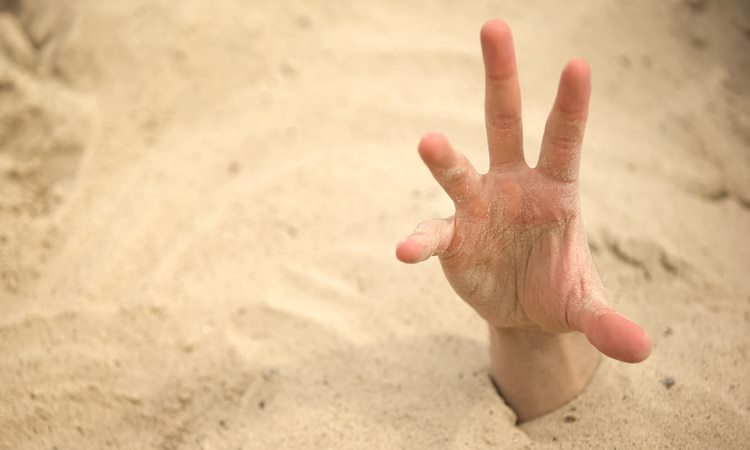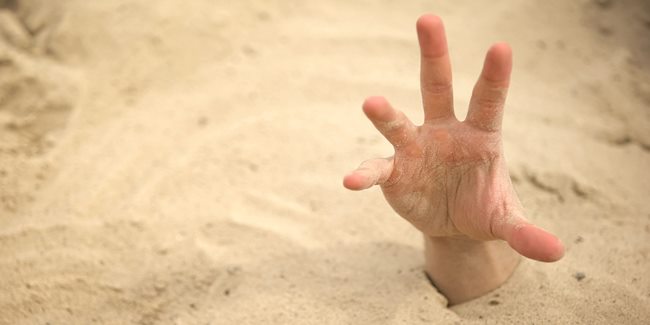Quick Answers to Common Questions About Quicksand
QUICKSAND – Don’t miss out on this captivating exploration! Read on to uncover the answers to common questions about quicksand.
In Hollywood, few instances captivate audiences as much as when a character finds themselves trapped in quicksand. This dramatic stunt, employed for intense scenes like those in Lawrence of Arabia or for comedic purposes as seen in Gilligan’s Island, reflects the enduring fascination with this dramatic scenario.
Yet, beyond its role in entertainment, quicksand is not just a theatrical stunt; it poses a real danger that has ensnared individuals throughout history. Despite its global presence, quicksand continues to be a genuine threat. Explore the following commonly asked questions to enhance your awareness of this natural hazard.

What Is Quicksand Made Of?
Quicksand may visually resemble damp beach sand, leading individuals to inadvertently enter it. Unlike regular sand, quicksand is thoroughly soaked with water, often due to poor drainage resulting from dense materials like clay. Additionally, salt and clay are frequently found, causing clay particles to clump together, contributing to the unstable nature of quicksand. In specific instances, quicksand can form even without salt, as observed in Brazil, where bacterial activity transforms disturbed ground into quicksand.
Quicksand can manifest in diverse locations where water meets sand, including rivers, lakes, beaches, marshes, and natural springs. It can also develop when water escapes from underground reservoirs, sometimes triggered by natural disasters.
Why Do People Sink In Quicksand?
The water-saturated composition of quicksand diminishes the friction between sand particles, making it incapable of supporting any weight. Consequently, when pressure disrupts its structure, quicksand transitions into a viscous liquid, causing individuals and animals to sink. Once submerged, the quicksand solidifies, making escape progressively difficult.
The dangers associated with quicksand go beyond individuals sinking into it. When quicksand surrounds structures like bridges or buildings, there is a potential risk of structural collapse.

READ ALSO: Elvis Presley Cars: Unveiling The Iconic Rides Of The King of Rock ‘n’ Roll
How Dangerous Is Quicksand?
Though stepping into quicksand results in sinking, the dramatic depiction of individuals completely disappearing beneath the surface is an exaggeration. The human body’s density makes complete sinking less likely, with buoyancy preventing individuals from going beyond waist-deep. However, escaping becomes more challenging as the quicksand solidifies.
Nevertheless, the risks associated with quicksand should not be overlooked. Escaping is a time-consuming process, as illustrated by a hiker in Utah’s Zion National Park in 2019, who spent hours trapped, suffering from hypothermia and other injuries before rescue. While fatalities are rare, some individuals have drowned in quicksand when rising water levels hinder escape.
What Should You Do If You Step in Quicksand?
Remaining calm is crucial if you find yourself in quicksand, as panicking can exacerbate the situation. Avoid seeking help from bystanders to pull you out, as the force required is substantial and could lead to further injury. Instead, shift your legs and feet slowly and steadily to reduce the quicksand’s grip. Distributing your weight over a larger surface area can also aid in your escape.
It’s essential to remember that your body’s density is lower than that of quicksand, providing buoyancy. With patience and careful movements, you can eventually free yourself from its grasp.

